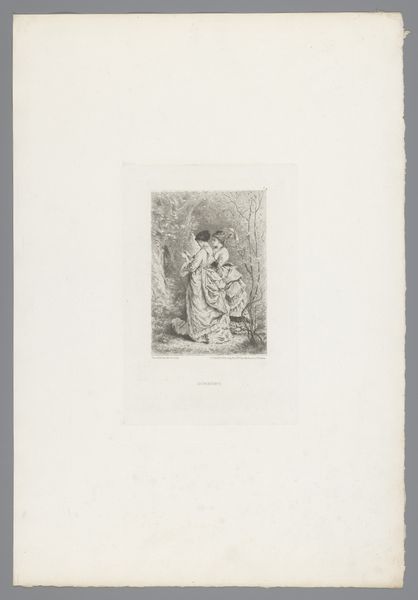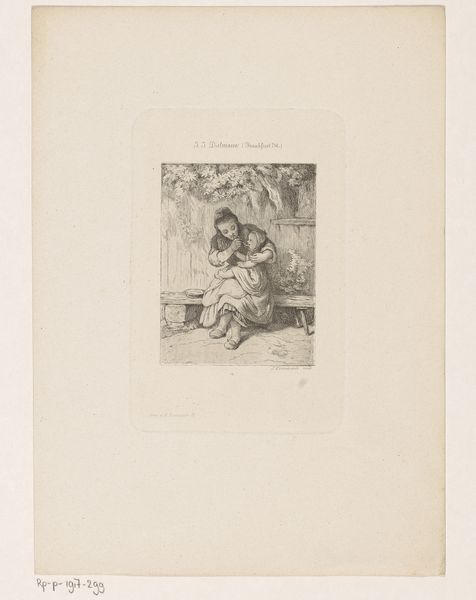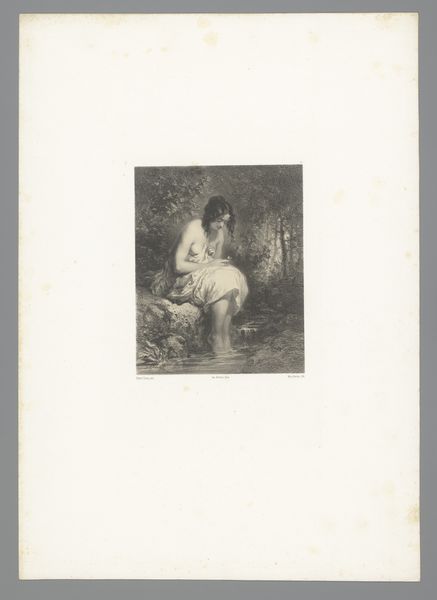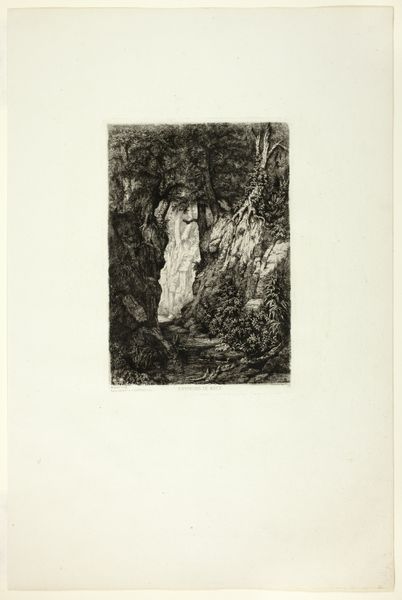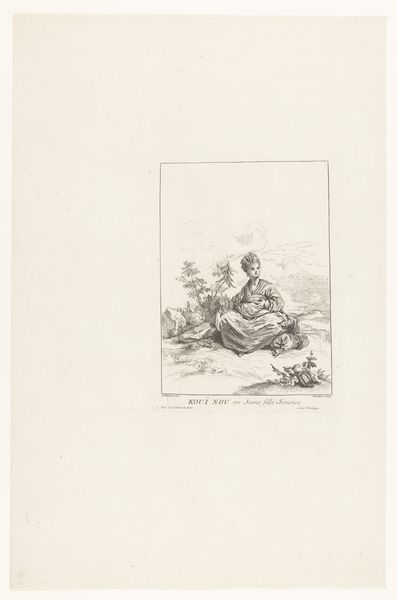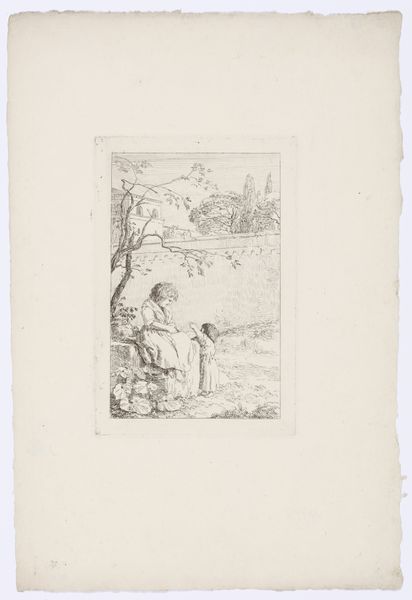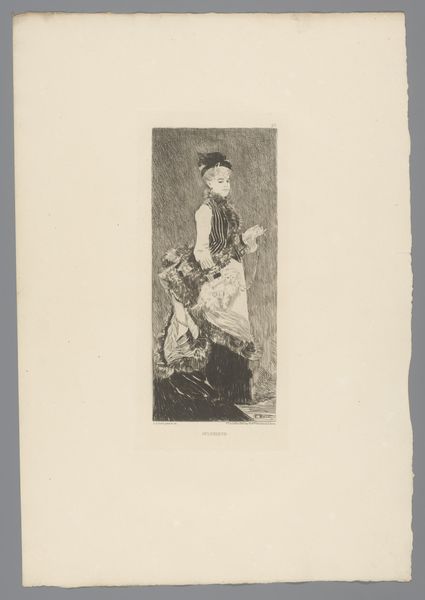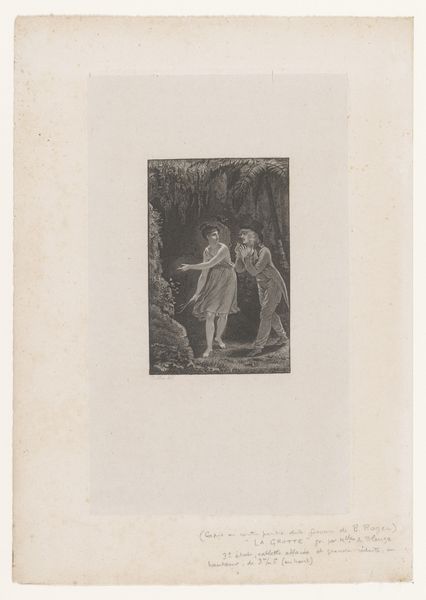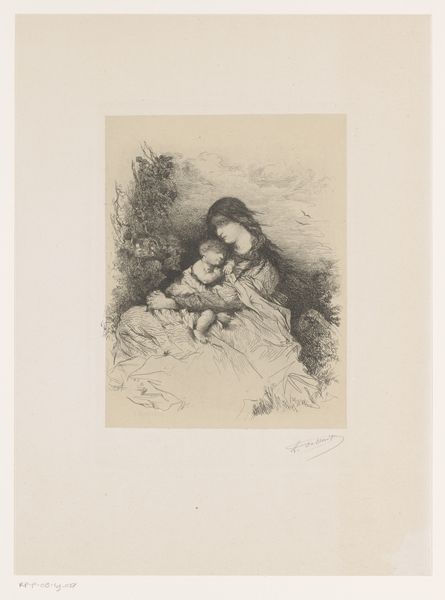
drawing, print, etching, paper
#
portrait
#
drawing
#
garden
# print
#
etching
#
landscape
#
figuration
#
paper
#
genre-painting
Dimensions: Image: 6 x 4 3/16 in. (15.2 x 10.6 cm) Plate: 9 3/8 x 6 1/4 in. (23.8 x 15.9 cm) Sheet: 11 13/16 x 9 5/16 in. (30 x 23.7 cm)
Copyright: Public Domain
Curator: "Two Young Ladies in a Garden," an etching by an anonymous artist, created sometime between 1873 and 1874. Editor: It’s beautiful but strikes me as melancholic; perhaps the limited monochromatic tones? And they appear quite literally overshadowed, absorbed into a garden rather than owning their space in it. Curator: Observe how the garden is rendered, almost as another character. Notice how their forms seemingly echo the dense foliage—even the frills of their dresses mirror the petals and leaves surrounding them. Do you get a sense they represent idealized femininity of the time, literally 'rooted' and intertwined with ideas of natural beauty and passivity? Editor: Absolutely. The dresses confine, subtly immobilize. It presents us with a visual code about expected feminine decorum. Note how one reads from a book – education and introspection as a pastime rather than a means of empowerment. The garden thus becomes a potent symbol, signifying both beauty and constraint. Are they imprisoned by expectations? Curator: Interesting that you read it that way, I perceive the act of reading as indicative of their curiosity to question their roles in the society and time they are confined. I perceive this garden as a metaphorical threshold between a constrained society, a site where conventional roles and hidden desires momentarily collide. The ambiguity is palpable, isn’t it? Editor: Yes, it certainly does become more nuanced the closer we observe it. The act of reading and seeking knowledge is often one that transcends social norms. How does the use of etching inform the historical context for you? Does that process imbue this work with unique signifiers? Curator: Etching as a medium allowed for detailed and nuanced expression, aligning it perfectly with the portrayal of delicate textures and fleeting moments typical of genre painting in that era. The multiplication from one original print allowed to spread messages through the bourgeoise, reflecting back their values and behaviors in everyday environments. Editor: And who is the unknown artist speaking to through these etched lines and lush foliage? Was this a message intended only for a select few, or a broader comment on the societal bindings women find themselves within? Curator: We can only speculate, yet what’s remarkable is that despite the passage of time, themes of self-discovery, and resistance against confining social expectations continue to resonate. Editor: It certainly stimulates considerations beyond its surface loveliness and evokes more probing discussions, just by inviting us to examine who benefits from these constructed aesthetics.
Comments
No comments
Be the first to comment and join the conversation on the ultimate creative platform.
